#Kim Yun Bae
Explore tagged Tumblr posts
Text









Boyhood | S01E01
Korean Drama - 2023, 10 episodes
#Drama: Boyhood#KDrama#Comedy#Youth#Action#Boyhood#소년시대#Yim Si Wan#Lee Shi Woo#Kim Yun Bae#Kim Jung Jin#Asian Drama GIF
24 notes
·
View notes
Text

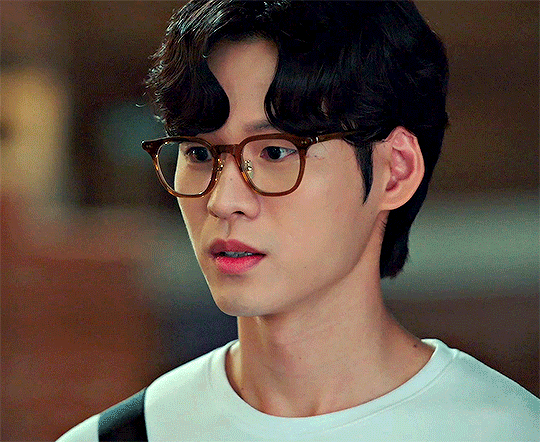
She wanted to be Spiderman when she was a kid, and even put glue on her hands. Now she's all grown up and putting shame on my face.
Love Next Door | Episode 13 엄마 친구 아들 dir. Yoo Je Won
#love next door#love next door kdrama#love next door netflix#kim ju eun#yun ji on#jung hae in#jung so min#윤지온#김지은#정소민#정해인#Kang Dan Ho#Jung Mo Eum#Bae Seok Ryu#Choi Seung Hyo#kdrama#kdramas#kdramagifs#kdrama gif#asiandrama#asian drama gif#asiandramaedit#love next door episode 13#love next door spoilers#mo eum x dan ho
400 notes
·
View notes
Photo




Love Next Door | 엄마 친구 아들 (2024)
@asiandramanet august bingo: color
#kdrama#kdramaedit#asiandramaedit#asiandramanet#love next door#엄마 친구 아들#choi seung hyo#bae seok ryu#jung mo eum#kang dan ho#jung hae in#jung so min#yun ji on#kim ji eun#my edit#adnbingo#adnbingo aug24#lextag#haeyeongs#udeokmis#roserayne#tuservic#samblr#userkimchi#purpleguitar
101 notes
·
View notes
Text


Omg Double Date 😭💘❤️
#love next door#kdrama#jung so min#jung hae in#choi seung hyo#bae seok ryu#kim ji eun#love#best friends#kang dan ho#yun ji on
57 notes
·
View notes
Text

#kdrama#romance#cute#otp#screenshot#screencaps#quotes#new kdrama#kdrama screencaps#love#kdrama quotes#i love you#netflix kdrama#love next door#tvn love next door#tvn drama#jung hae in#choi seung hyo#jung so min#bae seok ryu#kim ji eun#yun ji on#seo ji hye#funny#relatable
62 notes
·
View notes
Text

Jealousy's fair game
Words; 2,564
Fandom; CIX feat, Cignature
Pairing; Reader X Kim Yonghee
Characters; Kim Yonghee, Lee Byounggon, Kim Seunghun, Bae Jinyoung, Yoon Hyunsuk, Moon Chaesol, Kim Jiwon, Jung Yeonjeong, Jenny Yun, Jin Hyeonju, Goo Semi, Kwon Dohee
Warnings, Kissing Games, Angst, Smut, Jealousy, Alcohol Consumption, Body Marking, Hair Pulling, Degrading, spanking, Rough and slight public sex and Orgasm denial.
Requested by Anonymous
"Do you like Y/N?” Seunghun said with a smirk on his face looking at Yonghee. A red blush view falls upon his expression as you look to him awaiting his answer. You feel as if you've been choked when he screws his face in disgust and shakes his head. "Fuck you," you scoff giggling as you flip him off, despite knowing that it felt like he practically kicked you in the stomach right now.
You had a crush on Kim Yonghee for the last three years. The only one who knew this was Byounggon. You had confided in him that you wanted more then the friendship Yonghee was offering. Byounggon had reassured you that Yonghee wouldn't push you away. He was suspicious he also liked you and that had led to the very truth or dare game you were currently playing. "Dare," you said when it came your turn, you feared for a question that would lead to double rejection tonight. "I dare you to snog Byounggon," Semi giggled as both yours and your childhood friend’s eyes widened in fear. Before you could question the dare, Byounggon crawled on all fours towards you. His hands resting upon your shoulder reassuringly. Lips falling to yours he made sure to put on a show. Letting his tongue slide against yours as he kissed you slowly. His fingers rubbing down your jawline in such a tender moment. "You two sure you're not hiding something?" Dohee whistled excitedly. But before you could deny anything you noticed Yonghee unclench his fist. Was he jealous? Did it disturb him you kissing Byounggon? The game continues for several more rounds when it came to your turn again. Yeonjeong was about to throw a dare when Seunghun ended the game. "My neighbours are complaining," he said shaking his phone into the view. "I think we should leave this for another day," he said with a slight grimace as the room grumbled. "How you getting home?" Byounggon asked suggestively as you tilted your head his way. "I can't drive you home I’ve been drinking," he said despite knowing he had only drank one drink during the evening. "I'm getting a taxi. I only live round the corner, I’ll drop her back," Jinyoung said throwing his arm around your neck. Byounggon breathed deeply with annoyance. You then realised he was trying to encourage Yonghee who was sober all night to give you a ride. "I'll look after your girl I promise," Jinyoung giggled tipsy at his elder. "A kiss don't equal lovers," Byounggon protested as you took one look to Yonghee. He was quiet and avoided your eye contact. You couldn't help but feel he was jealous of Byounggon and Jinyoung.
"7 minutes in heaven," Chaesol said in excitement when you met the following week for drinks. Everyone agrees but you and Yonghee. You knew that these games were hurting the both of you. As everyone wrote down their names and placed them in a hat. You sat hoping that somehow you would be placed with Yonghee. Instead Hyunsuk was paired with you. His hands frisky falling on your body as he pulled you to the walk in wardrobe in Seunghun’s room. "I so want to get lost in your body," he said stroking his hand down your torso. "I don't think I can do this," you complained as he lightly hummed. "Because you like Yonghee," he said. As through the cracks of the wardrobe you could see a gentle smile. "Yes," you whispered looking down. Fingers under your chin he pointed for you to look his way. "He's so stubborn he won't admit he likes you too," he said as you tilted your head his direction. "He likes me?" You asked as he chuckled. "But he won't admit it," Hyunsuk chuckles lightly. "Why?" You ask wanting to know more. "Ask Seunghun he knows the details, he confides in everything with him." Hyunsuk said as his hands pulled the loose hair behind your ear. You could hear the countdown as you both stumbled out the wardrobe. Your faces hot from the heat. But you guess the room would have made presumptions of how steamy it was in there. You could see Yonghee’s jaw tighten as your eyes met. "I've got to go," Yonghee said sternly as he got off the floor. "Please don't leave so soon," you asked looking his way. But he refused eye contact. "Sorry Seunghun, my father needs me to run some errands," he said straightening his jacket. You couldn't help but follow as you chased him down the corridor. "Yonghee," you called as he stiffened upon your voice. "I'm busy Y/N what is it that you want," he growled without looking your way. "Can we talk," you pleaded as he started walking once more. "I'm busy, another day," he grumbled before fastening his speed as you stood there, giving up chasing him.
The following week another greet. Seunghun was struggling for ideas clearly till Byounggon mentioned the Suck and blow game. This time Seunghun made sure that you were placed between him and Yonghee. You were placed in a group with Jiwon and Byounggon. As Jinyoung, Hyunsuk was with Hyeonju, Jenny & Semi. You watched as Byounggon sucked in the piece of paper between his lips as he arched towards Jiwon. Hands falling to the back of her head he leaned himself in as the two worked to pass it. Jiwon twisted to look at Seunghun as he chuckled. Straightening his face, he rushed his lips at her. Seunghun struggled and all of a sudden you saw the sheet fall to the floor. Byounggon and Jiwon groaned at Seunghun who looked sheepish. Your eyes looked to the other group. Semi gently slapping Jinyoung was telling you that their side was doing no better. You could hear Yonghee’s frustration behind you when Seunghun let the paper fall once more. "Come on we're not going to win at this rate," you grumbled gently punching Seunghun’s arm as he looked at you sheepishly rubbing it. When he managed to succeed, his face spun to yours. As he pulled the sheet to your lips he chuckled letting it slip as your lips locked. "Seunghun," you grumbled feeling your lips where his fell. Seunghun's face was a little fallen when he took the figure behind, telling you once again Yonghee wasn't amused. As the paper made its way back down. Seunghun’s hand accidentally touched your breast while reaching for your arm. Causing your own lips to let the paper fall. "For fuck sake will you two stop making out and hurry up so we can win," Yonghee grumbled behind you which had you sigh. The game was a lot harder then it looked. After yours and Seunghun's third attempt you turned to face Yonghee. It was like just the thought of him being on the other side of the paper made your heartache. Instantly your lips failed to suck the paper in as it fell before Yonghee could even get close. His eyes rolled in frustration as you quietly apologised. Passing to him for the second time, just the mere hand on your shoulder had your heart thundering as he reached towards you. The paper once more fell to the floor. "You guys just pure suck at this. You should give up. We've won," Jinyoung said amused. "For fuck sake, if you and Seunghun wasn't flirting we would have won that," Yonghee said gritting his teeth as Seunghun dead panned him back. "What the actual hell man," Seunghun grumbled back at him. "I'm done with these silly drinking sessions," Yonghee said going to swipe his coat from the coat rack.
"Don't please, please don't go," you spun towards him hands on his chest as he refused to look your way. "Don't let me get in the way of your men time," he growls looking up towards you. "The only man time I want is with you," you spluttered letting the words fall as the girls gasped. "Kim Yonghee I'm crazy about you and you only," you finished as his face softened towards you. "I only kissed Byounggon because it was a game," you said pausing to look your friend's way. "We're just friends I promise," you said as nerves hit you. "Jinyoung just took me home that's all nothing happened," you added as Jinyoung confirmed your events. "Hyunsuk and I just spoke in there. Mostly about how you liked me but your scared," you said pointing to the wardrobe. "I'm not scared," Yonghee spat out. "And Seunghun is just really shit at that game, pure and simple," you said as Seunghun widened his eyes in horror before calming as the guys chuckled. "To be fair she's got a point," he added chirpy at his diss. "And just now with you you made me so anxious. The butterflies in my stomach you gave me at the thought of our lips being close," you said placing your hand over your stomach to calm it. "Yonghee....." you couldn't finish the sentence as he dragged you to the walk in wardrobe.
Entering the dark space he pushed you against the wall. He clearly doesn't want to talk as his lips attack yours. Teeth clashing in his rushed desire. Like a bottle that's been shook and exploded. His hands find the hair tie holding your hair as he pulls it out. Fingers twirling around the locks he pulls enough to expose your neck. Teeth falling to the skin he suckles causing you to hiss as your hands grab his waist. "Your mine," he growls before pressing his lips to another spot on your collarbone. "I'm going to mark you up so everyone knows your mine," he threatens after he marks a second blemish. Hands falling to your dress he lowers the top half so that his lips can reach the top of your breasts. He continues his marking along them as you hiss, digging your nails into his waist. "I'm going to punish you for making me jealous," he growls as you hear the guys spew, 'eww,' , 'Save my ears,' & 'Do this elsewhere," from the other side of the wall. Twisting you so you're facing the surface, he places your hands against the plasterboard. Hands raking up your dress they find your panties, as he rips them. Fingers skirting to your folds he wastes no time plunging them in. Scissoring your heat roughly you grimace as he sets a rushed pace. Though pain is the first sensation you feel it's like your body enjoys his torture. Yonghee can feel this from how soaked your core is. "Your so wet my little whore," he says as his teeth find another space of skin on the back of your neck to mark. "You can't cum," he warns as his fingers speeds that draws moans. Music hits from outside the wardrobe, no doubt to drown out the moans that had slipped from your lips. He pulls his fingers leaving you empty as he places them in your mouth. "Taste how wet you are you dirty bitch," he growls in your ears that has your walls clench around nothing. "I'm going to fuck you now, and if you cum before I give permission. That's it, I'm walking away from you do you understand?” he asks so deeply next to your ear. Nodding doesn't give him satisfaction. "What did I say Y/N?” he grumbles as his teeth dig in your skin once more. "That if I want you I have to not cum," you hiss beneath the sore skin burning from his marks. You hear a rip of foil and you wait patiently for him to continue his torture.
Bending you over slightly he enters you with one deep fast thrust. Screams falling that you know the music won't mask. "That's it baby, you won't ever get me jealous again will you?” he asks as his hands wrap your hair around them. "I can't hear you," he spits out as he yanks your hair. "No baby, I won't," you splutter but you know he can't hear. Another yank has you repeat it much louder. His red hot shaft starts thrusting with heaviness against your cervix. Walls clenching around him has his pull much harsher around your hair. "Don't you dare cum," he demands as you help to meet his thrust. "You're so hungry for my cock aren't you my little whore," he chuckles pleased with your desperation to feel him deeper. Feeling an orgasm creep up you stiffen in fear. "What's up baby," he sniggers knowing your struggling. "Don't hold back, fuck yourself on me," he demands but you don't move. "What's up, you're such a cock whore you can't work with me without falling apart," he mocks as you nod. "Well let me work against your lazy ass," he says slapping your ass that has you yelp. Slamming him self with more speed has your fist clench against your struggle. You know the real risk of falling apart and exploding around him is high right now. "Please, please," you cry as you slap the wall feeling your body tremble. "You can't Kiss Byounggon and Seunghun and think you can get away with it," he grumbles as you whimper. "I didn't kiss Seunghun, not on purpose," you whimper as you throw your head from frustration into the wall hurting as it falls. Hands falling to your arms he pulls you backwards to avoid your head hitting the wall. However, the change of position does little to ease your struggle. Tears are falling down your eyes as you feel your losing your mind holding your orgasm back. "Who do you belong to?" He pants into your ear. "You," you whimper as his hands embrace your body pulling you closer to him. "What's my name?" He growls as you hear his own struggle in his voice. "Kim Yonghee, I belong to Kim Yonghee," you cry as you feel seconds away from slipping. "Please, please I can't hold back, I don't want to lose you," you sob in fear and excitement. "Oh Baby, you won't lose me because your mine now," he chuckles as his lips kiss a tear running down your face. "You can cum baby," he pants as he chases his high. "Y/N your mine," he cry's as he spills himself into the condom. "Yonghee," you scream so loud you hear your ears ring as you explode around him. Convulsing on his dick he thrusts his remaining rhythm into you as he leans himself with his arms wrapped around you into the wall.
Heavy panting in your ear you feel him slip from you. "Your mine Y/N, don't forget that," he says barely audible. "No more of these silly kissing games," he demands as you twist in his hold to face him. "Why would I kiss anyone that isn't my boyfriend?" You question looking up at his face. Even in the slight gap of light his beautiful mole under his left eye in your view left you breathless. "Let's go show them what's mine," he said as his lips fall to yours. Holding your hand in his you both walk into the room as you capture everyone blushes, but Seunghun and Byounggon smirks. "Finally you two are sorted, now never torture us again with those sounds," Seunghun snaps as you both blush like crazy.
Masterlist
#kpop smut#kpopidol#fiction#cix smut#Kim Yonghee smut#lee byounggon#Kim seunghun#bae jinyoung#yoon hyunsuk#Moon Chaesol#Kim Jiwon#Jung Yeonjeong#Jenny Yun#Jin Hyeonju#goo semi#cignature#kwon dohee
21 notes
·
View notes
Text
I SHOULDN'T HAVE WATCHED WEDDING IMPOSSIBLE!!!
I SHOULDN'T HAVE WATCHED IT!
Now, I have to suffer again from the agony of waiting! 😢😢😢
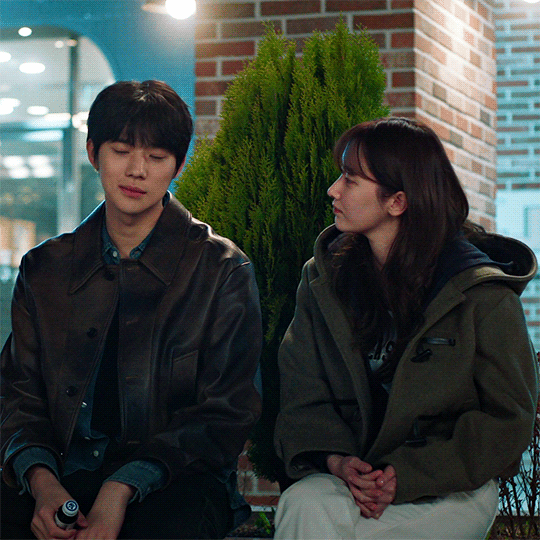
This new Krama really got me!
I first saw this on a Facebook Page where I read the synopsis and got interested. Plus, new faces means new Oppa! 🫰🏻

So the story revolves around Na Ah Jung who is a struggling actress, she has a 15 years life long friend, Do Han who is secretly a third generation chaebol heir. I mean, can you really keep a secret that long to your "best friend"? Besides on being a chaebol heir, Do Han is a closet gay. So classic Kdrama comes in where the 할아버지 (harabeoji) wants Do Han to marry the other chaebol heir, Yoon Chae Won who is secretly in love with Do Han's 남동생 (namdongsaeng), ✨ Lee Ji Han ✨ He is our main oppa for this Kdrama. So Do Han being the dramatic he is wants none of this to happen. He offered Ah Jeong to be his fake wife just not to get the heir (like wth if that is irl, that is crazy). But Lee Ji Han has another plans for his 형 (hyung). He is the most supportive brother in the Kdrama history who comes from crazy rich family. We always see sibling rivalry from it, and yeah, classic Kdrama where the first and legit family bullies the illegitimate children (Do Han an Ji Han). And yes, guess what, of course, Ji Han's plan will back fire at him because he will fall for our main girl, Ah Jeong and I AM STILL WAITING FOR THE NEXT EPISODES!
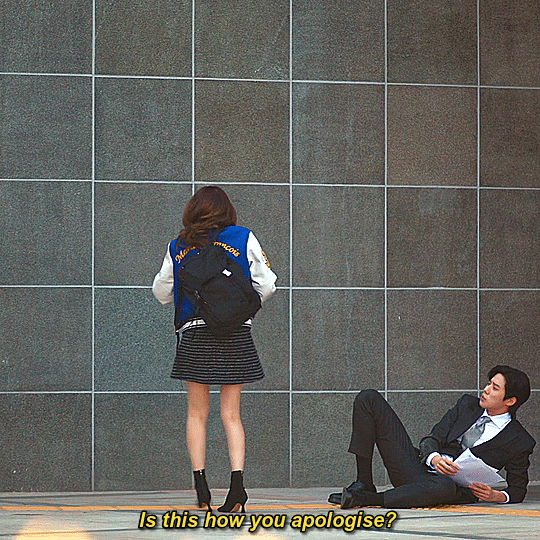
The casting is great. I could already feel the chemistry between Jeon Jong Seo (Ah Jeong) and Moon Sang Min (Ji Han). It is like Episode 4 as of March 8, 2024 and I cannot wait to watch the next episodes. This is one of the Kdramas I regret watching RIGHT AFTER IT WAS AIRED. I hate waiting on Kdramas because my head and heart won't stop thinking and feeling what will be the next episodes be like. 😂

I'll be back after the series so I can make another blog post about it. But for now, let us all watch, enjoy and got crazy while waiting for WEDDING IMPOSSIBLE.
#blog post#kdrama#kdramaedit#korean drama#kdramanetwork#kdramadaily#netflix kdrama#tvn drama#Wedding Impossible#Jeon Jong Seo#Moon Sang Min#Kim Do Wan#Bae Yun Kyung#tv series#kdrama series#kdrama show#tv show#romcom#romantic comedy kdrama#romcom kdrama
18 notes
·
View notes
Text
Family Matters
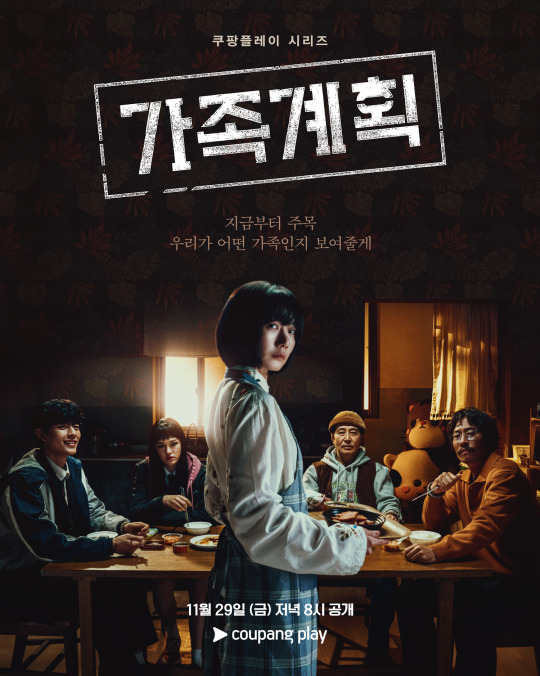
TV Shows/Dramas watched in 2024
Family Matters (2024, South Korea)
Directors: Kim Gok & Kim Sun
Writer: Kim Jung Min
Mini-review:
Started this because of the cast and... that's basically the main reason why I finished it. The last two episodes were really good but, before that, I spent a lot of time just scratching my head. It felt like the show was simply setting things up for what's to come, so it never gave enough information to properly tie its many plot threads, nor did it follow a clear logic. And it was pretty obvious that a lot of stuff was left on the cutting room floor in order to reduce the initial 8-episode order. Furthermore, its sense of humor was very hit-or-miss; sometimes I laughed out loud and others I was like "wtf". Still, the cast is fantastic, and like I said before, I enjoyed the final episodes a lot, so I would probably come back for a second season of Family Matters.
#family matters#kim gok#kim sun#kim jung min#bae doona#ryu seung beom#baek yoon shik#park solomon#lomon#lee su hyun#nam yoon ho#yoo seung mok#kim gook hee#kim jung hyun#kwak ja hyung#kim eun woo#lee dae yeon#bae jae young#lee jae hak#kim si eun#kwon ji woo#kim joong hee#jin seo yun#kim yeon kyo#hong suk bin#thriller#dark comedy#triggering content#k drama#2024 tv shows and dramas
2 notes
·
View notes
Text
Family by Choice Whump List
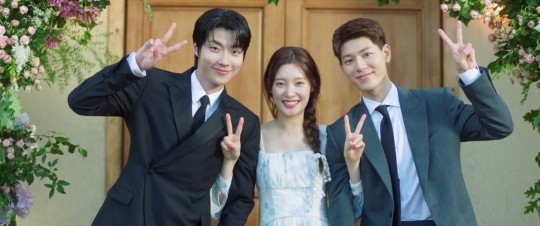
Summary: Despite not being biologically related, Kim San Ha, Yun Ju Won, and Kang Hae Jun share a close bond with each other. The trio spent their adolescence raised by Ju Won's father, Jeong Jae, and San Ha's father, Dae Uk, who did their best to give them a happy childhood as they healed from past trauma. Upon reaching adulthood, however, San Ha and Hae Jun sought out their biological families, leaving Ju Won behind. Ten years later, the five members of their found family reunite, but things aren't the same as they used to be. Ju Won holds some resentment after feeling abandoned by San Ha and Hae Jun, while the two boys are struggling with their own familial issues and one is struggling with new romantic feelings for Ju Won. Can these chosen siblings work out their feelings with each other, and will romance form between them?
Genre: Comedy, romance, youth, family
Year: 2024
Country: South Korea
Where to watch: Viki
Note: This is a remake of the Cdrama Go Ahead. You can check out that whump list here.
Possible spoilers ahead...
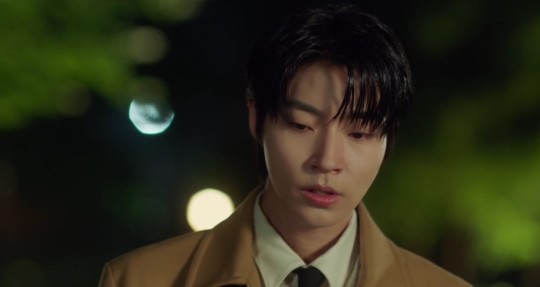
Whumpee: Kim San Ha played by Hwang In Youp
Episode 1: None
Episode 2: Called unfortunate; upset about his mother
Episode 3: Flashback to when his little sister died; flashback to his childhood trauma
Episode 4: Unable to sleep; sees his mother for the first time in ten years, his mother tells him she still believes he is responsible for his sister’s death; flashback to his sister’s death, in a daze, nearly walks into traffic; punched in the face, falls to the ground, blood on his lip, single tear falls
Episode 5: (Picks up from previous episode) on the ground, blood on his lip; in a fight (semi-comical), arrested, father disappointed in him
Episode 6: Mother tells him his sister died because of him; sitting with his knees to his chest, remembering all the times his mother blamed him; stops eating, family concerned about him, crying; has a fever, towel on his head, family caring for him
Episode 7: Learns his mother was in a car accident, teary-eyed
Episode 8: His mother says hateful things to him
Episode 9: Crying
Episode 10: Scar on his hand, flashback to his mother refusing to let him leave
Episode 11: None
Episode 12: Sick, cared for
Episode 13: Mother tries to guilt trip him into staying with her, single tear falls, mother slaps him, upset, sinks down to his knees; confronted about his insomnia, crying
Episode 14: None
Episode 15: Father figure doesn’t approve of his relationship, sad; hit on the head (by accident), falls into a table, lands on the floor, in the hospital, wound on his side, bandage on his head; confronts his mother, flashback to hot food falling on his back
Episode 16: None
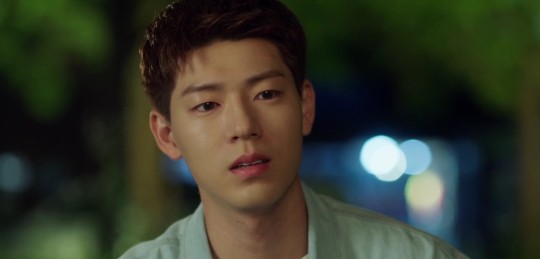
Whumpee: Kang Hae Jun played by Bae Hyeon Seong
Episode 1: None
Episode 2: Called unfortunate; finds out someone has been taking pictures of him; told not to be a burden; thinks he sees his mother (who abandoned him), sad
Episode 3: Learns his bio dad lied to him, sad; crying
Episode 4: Memories of his mother; upset
Episode 5: In a fight (semi-comical), arrested; made to feel like a burden; crying; told to forget about his mother
Episode 6: Learns his mother came back but doesn’t want to see him, crying
Episode 7: Crying under his covers; crying while talking about his mother
Episode 8: Concern for his dad; chooses to go to America with his bio dad so his dad stops overworking himself, crying
Episode 9: Crying
Episode 10: It’s revealed that he hurt his leg while in America, upset, concern for him, scar on his ankle
Episode 11: Thinks he sees his mother, teary-eyed
Episode 12: Scolded, crying, dad tells him to leave; finds his mother, emotional; says he’s too scared to hear why his mother didn’t come back
Episode 13: None
Episode 14: Feels left out, crying, asks why he’s always getting abandoned; confronts his mother, crying, family concerned for him; discovers the real reason his mother abandoned him, emotional, has a breakdown
Episodes 15-16: None
87 notes
·
View notes
Text
Upcoming Kdrama November 2023 ❤️
1/11: moon in the day with Kim Young Dae, Pyo Ye Jin, On Joo Wan. 14 episodes; fantasy, romance. trailer
3/11: daily dose of sunshine with Park Bo Young, Yun Woo Jin, Jang Dong Yoon. 12 episodes; medical, drama. trailer
8/11: vigilante with Nam Joo Hyuk, Yoo Ji Tae, Lee Joon Hyuk. 8 episodes; thriller, psychological, action. trailer
18/11: secret playlist with Kim Hyang Gi, Shin Hyun Seung. 8 episodes; romance, youth.
20/11: a bloody lucky day with Yoo Yun Suk, Lee Sung Min, Lee Jung Eun. 10 episodes; thriller, psychological. trailer
24/11: my demon with Kim Yoo Jung, Song Kang, Lee Sang Yi. 16 episodes; fantasy, rom-com, action. trailer
24/11: boyhood with Im Siwan, Lee Sun Bin, Lee Shi Woo. 10 episodes; action, thriller, youth.
24/11: the story of Park's marriage contract with Lee Se Young, Bae In Hyuk, Yoo Sun Ho. 12 episodes; historical, fantasy, romance. trailer
27/11: tell me you love me with Jung Woo Sung, Shin Hyun Bin. 16 episodes; romance, melodrama.

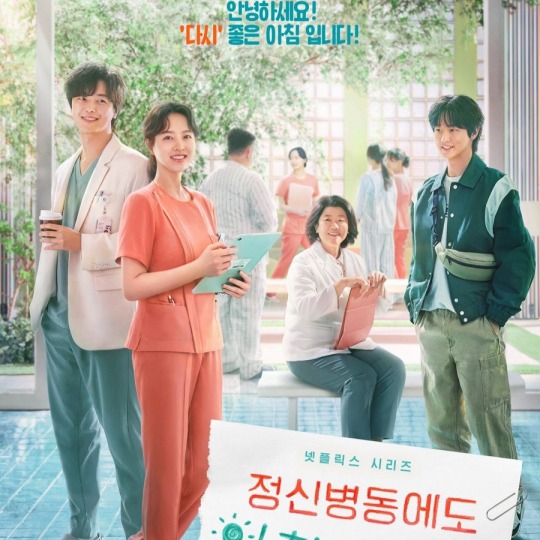
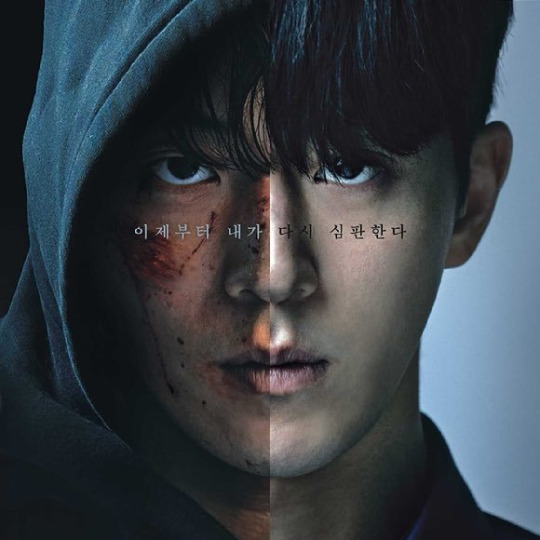


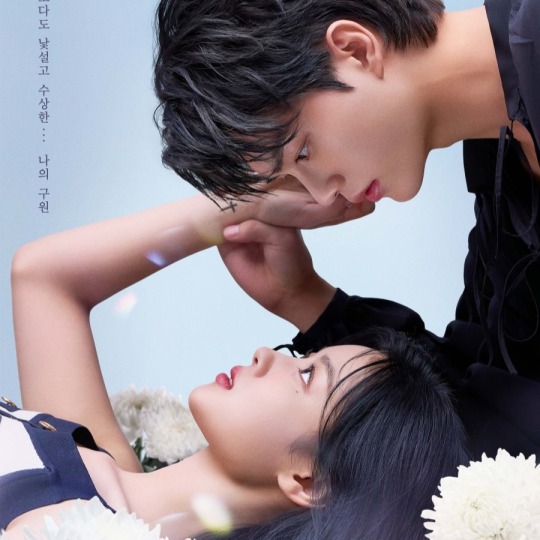
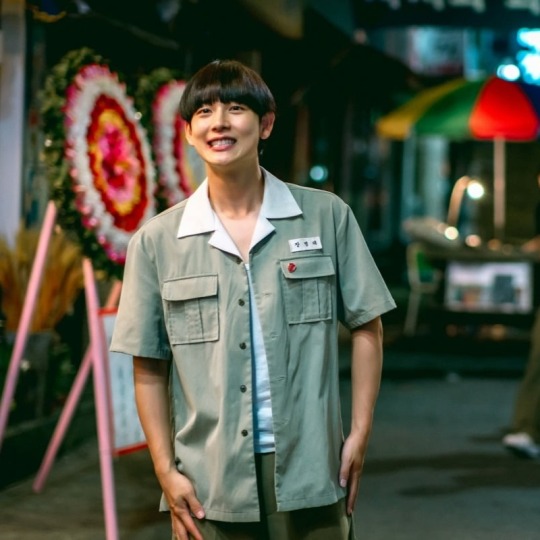
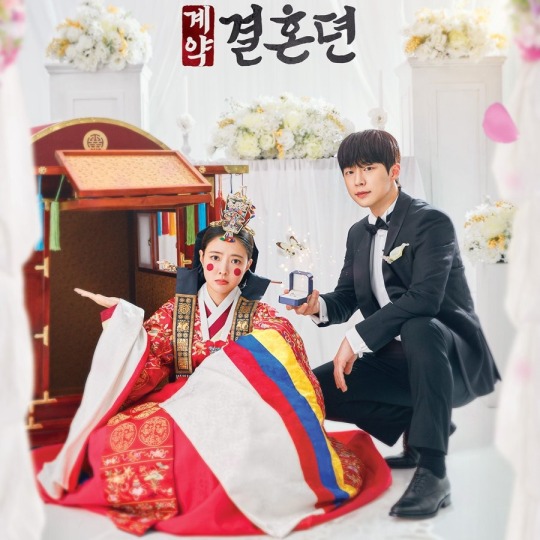

What do you mean there is a new drama with Im Siwan coming soon?! 😍
*REBLOG FOR UPDATES*
#upcoming kdrama#november 2023#moon in the day#daily dose of sunshine#vigilante#secret playlist#a bloody lucky day#my demon#boyhood#the story of park's marriage contract#tell me you love me#kim young dae#park bo young#yun woo jin#jang dong yoon#nam joo hyuk#kim hyang gi#yoo yun suk#kim yoo jung#song kang#lee sang yi#im siwan#lee sun bin#lee se young#bae in hyuk#jung woo sung#shin hyun bin
133 notes
·
View notes
Text

THE SILENT SEA // KDRAMA DİZİ YORUMU
UYARI : Yazılar genel olarak spoiler içerebilir. İçermeyedebilir.
İmdb puanı: 6,9 Benim puanım: 7
Drama: The Silent Sea (English tilte) / The Sea of Tranquility (literal title)
Hangul: 고요의 바다
Director: Choi Hang-Yong
Writer: Park Eun-Kyo
Producer: Jung Woo-Sung
Date: 2021
Language: Korean
Country: South Korea
Cast: Bae Doo-Na, Gong Yoo, Lee Joon, Kim Sun-Young, Lee Mu-Saeng, Lee Sung-Wook, Kim Si-A
İlk çıktığı dönem bir iki olumsuz eleştiri okuduğum için izleme listeme bile almadığım ama en nihayetinde Gong Yoo 😊 olduğu için daha fazla karşı koyamazdım. Zaten 8 bölümlük minnacık bir dizi. İnsanlığın yok olmaya başladığı bize çok da uzak olmayan yakın gelecek konu alınmış. Suyun damla hesabı ile dağıtıldığı, zenginliğin su ile ölçülebileceği bir dünya da geçiyor. İnsanlar öfkeli, bıkkın ve kabullenilmiş çaresizliği ile yaşıyor.
Beklediğimden çok daha başarılı bir giriş ile oldukça ilginç bir şekilde başladı. Bütün bu kötü şartlara çözüm bulmaya çalışan hükümet, çok önce ayda bir araştırma üssü kurmuş. Ancak beş yıl önce gizemli bir radyasyon sızıntısı nedeniyle 117 kişi ölünce araştırmalarda durdurulmuş. Günümüzde ise yeni bir ekip ile öncekilerin bulduğu önemli numuneleri almaya karar veriyorlar. Bunun için bir ekip kuruluyor.
Dr. Song Ji-An (Bae Doo-Na) ablasını bahsi geçen bu ay üssündeki radyasyon kazasında kaybettikten sonra onun araştırmasına ulaşmaya çalışan bir bilim insanı. Hem ablasının amacı olan dünyayı kuraklıktan kurtarmak üzerine araştırmalar yapıyor, hem de ablasına ne olduğunu bulmaya çalışıyor. Başta uzay ekibine katılmak istemese de merakına yenik düşüyor. Ekipte almaları gereken numunelerden sorumlu kişi kendisi. Ben oyuncuyu Kore dizilerinden ziyade Amerikan bilimkurgu dizisi Sense8’den tanıyorum. Bence şahane bir diziydi. Dizi tamamen yapım ekibinin Game of Thrones’u geçen harcamaları nedeni ile iptal edildi. Yazık oldu.
Captain Han Yun-Jae(Gong Yoo)’a gelirsek. Kendisi operasyonun başındaki isim. Herkesin güvenliğinden sorumlu, tek söz sahibi kişi. Gong Yoo ile ilgili ekstra bir şey söylememe gerek olduğunu sanmıyorum. Onu bir kere izlemiş herkes benimle aynı fikirleri paylaşacaktır. Dizide de yine varlığı yeter tadındaydı. Ekipte pilot, doktor, teknisyen, asker olmak üzere farklı meziyetlerde insanlar mevcut. Aynı zamanda bir önceki kazadan kurtulduğu söylenen bir kişide onlara dahil oluyor.
Kısa bir dizi olmanın verdiği yetkiye dayanarak uzay gemisi yolculukları dizinin daha en başında aksiyon başlıyor. Gemileri arıza yapan ve zorunlu iniş yapmak zorunda kalan ekipten daha en başta bir önceki olayın kurtulanını kaybediyorlar. Oksijenleri bitmek üzereyken güç bela üsse kendilerini yayan olarak atıyorlar. Bismillah daha girer girmez cesetlerle karşılaşan ekip, Dr. Song Ji-An’ın “bu insanlara ne olmuş bi bakalım, otopsi yapalım” ısrarlarına rağmen tam gaz, almaya geldikleri numuneleri bulmak için devam ediyor.
Şimdi dizide ufak bir yer çekimi sorun vardı. Maalesef o uzayda olma duygusunu tam veremiyordu. Ama bence sorun değildi. iç mekanlarda, yerçekimi olmadığını göstermeleri gerekmediklerinde ki dizinin büyük çoğunluğunda çok da göze batmadı. Kore dizilerinde karakterler her zaman ön planda oluyor. Oyunculuklarla çoğu zaman bu tarzlarını da arşa çıkartıyorlar. Belki bu kadar düşmemizin sebebi de bu oluyor. Bu dizi bunu birazcık değiştirmiş diyebilirim. Kesinlikle hiçbir karakterin hikayede hükmü yoktu. Minik minik arka plan hikayelerini gösterdiler ama hiçbir karakter tam anlamı ile hakimiyet kuramadı. Kuramadığı içinde anlatılan arka plan hikayeleri hep havada kaldı.
Aslında dizinin fantastik tarafı da var ama bilimkurgu öğesi çok daha ağır bastığı için o fantezi normalleşiyor. Ayda almaya geldikleri numune canlı ve kendi kendine çoğalan su. Bu kısımda dizi izleyiciye farklı denklemler kurabilmesi ve soru sorması için özgürlük tanıyor. İnsanlar için ölümcül olan bu suyu dünyaya götürmeliler mi? Çoğalabilen bu su nasıl kullanılabilir. Dünya bu suya karşı evrimleşirse nasıl bir sonuç ortaya çıkar. Zehir mi, panzehir mi? Bu noktada dizi kendi sorunun cevabını aslında kilit noktalarda satır aralarına gizlemiş gibiydi.
Aslında dizi yeni bir şey anlatmıyor. Daha önce bir çok dizi, film dünya dışından gelen su ile ilgili senaryoları bizlere sundu. Bu diziyi benzerlerinden ayıran şey o suyun olmadığı bir dünyayı ve böyle bir suyun varlığını anlatırken ki yaratılan görsellik. Bu dizide nasıl ana konu “su” ise iki yıl sonra çıkan Black Knight dizisinde “hava”ydı. İkisinin ortak noktası ise hikayeyi anlattıkları o dünyayı izleyiciye başarılı bir şekilde aktarabilmeleriydi.
Aksiyon dozu yerinde, sinematografisi ise oldukça başarılıydı. Kısa olmasından da kaynaklı birçok şey uzatılmadı. Sakinleşmeye başladığı anda hareketlendi. İnsanın düşmanı; kuraklıkta olsa, kıtlıkta olsa, kirlilikte olsa yine insan oluyor. Bu tarz dizilerde gerilimi arttıran da tempoyu hızlandıran da hep bu insan hırsları oluyor. Bu dizideki bilimkurgu kısmı ise bize çok uzak olmayan bir düşünce olduğu için çok daha gergin ve gerçekçi ilerliyor diyebilirim.
Bu paragrafta bir eser miktarda spoiler vereceğim ama bunun yorumunu yapmazsam olmaz. Şimdi bu terk edilmiş insan yapımı üssün içinde kimsenin bilmediği çoğalabilen bir su bulunuyor. Ve buna adapte olmuş bir insan yavrusu ile karşılaşıyorlar. Kazara da bu küçük insan birini ısırınca bağışıklık kazanıldığını gördüler. Abicim ekipte biri bilim insanı olmak üzere iki tane doktor var kısmını geçtim; sıradan bir vatandaş olarak böyle bir ortamda bu bilgiyi edindiğim an beni de bir ısır gözünü seveyim diye açarım kolumu. Bunlar hiçbir şey yapmadılar. Çok saçmaydı. Saçma demişken en başta bahsettiğim “cesetlerle karşılaştıklarında, bunlara ne olmuş bir bakalım” ısrarını görmezden geldiler. Hadi tamam dedik. Sonra ekipten biri diğerlerinin nasıl olduğunu bilmediği bir şekilde enfekte olup öldü. Biz izleyici olarak nasıl neden olduğunu gördük, o kısımda sorun yok. Ama siz görmediniz yahu, bu nasıl bulaşıyor acaba endişeniz nerede? Yine 2 doktor varken bu kadar tedbirsiz davranışlar sergilemek kesinlikle senaryo açığıydı. Her halta eldiven çıkarıp dokandılar. Maske vs hak götüre… çok anlamsızdı, çok. Ayrıca neden bulaşan adamın kamerasına bakmadınız? Nerden bulaştı bu diye bir izleyeydiniz keşke.
Ortada öyle bir gerek yokken kendini feda etme kısmına girmeyeceğim. Hiçbir motivasyonu yokken ben öleyim madem diye atlayan bir karakterimiz vardı. Bunun kim olduğunu söylemeyeceğim. Ama yaşamak için bir sürü nedeni varken kendini feda etmek için hiçbir nedeni yoktu.
Sonuç olarak, sonunu görmezden gelirsek güzel ama bitmemiş bir diziydi. Sonunu açık bırakmak istemişler ama daha çok çekmemişler gibiydi. Bunun üzerine gelebilecek 2.- 3. hatta 4.sezon çekilebilirdi. Bunun yerine 2 sene olduğu gibi bırakma kararı alınmış. Bundan sonra da çekileceğini sanmıyorum.
Yaşandı bitti saygısızca 😊
OST:
Tizane - Floating
Raven Melus
BAŞKA NELER VAR ?
FOTOĞRAFLAR
#The Silent Sea#The Sea of Tranquility#kdrama#yorum#inceleme#dizi#eleştiri#kore#Bae Doo-Na#Gong Yoo#Lee Joon#Kim Sun-Young#Lee Mu-Saeng#Lee Sung-Wook#Kim Si-A
3 notes
·
View notes
Text
A Valentine’s Day Ode to Characters That I Love & Adore…
1. Drunk Ninja Chun from Warrior Baek Dong Soo.

I was down BAD for this dude from the second he swaggered and stumbled onto the screen. I still can’t explain it but it was instantaneous. Lust.
2. Tagon & Ta Al-ha from Arthdal Chronicles.

I love a power couple. Especially when you’re never quite sure if they might kill each other one day.
3. Gong Shim from Beautiful Gong Shim.

I just fell for her. She was so real. Sure the drama fell off towards the end but I always think of her.
4. The Post It Girl, Kim Miyoung, from Fated to Love You.

She’s just so genuine and sweet and struggling but not at all a victim and I would die for her. Her personality is my ideal type in ladies. Nerdy, kind, softies who would throw themselves in front of a bus to rescue a kitten.
5. Kang Chi from Gu Family Book.

I loved this character in this cheesy, feel good fairy tale show. He was so charming and good hearted. I loved Bae Suzy in this too but Kang Chi won me over completely. Monster boys rule.
6. Nan Xu Yue | Tian Mìng Shu from The Blossoming Love.
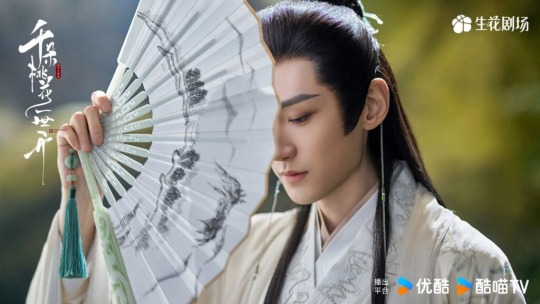
My guy Fate just did not get it. And I’ve felt like the majority of my life, fascinated but closed off from all the feelings I’m seeing around me.
7. Zhu Yan from Fangs of Fortune.

Mesmerizing character, mesmerizing performance, and mesmerizingly handsome actor. I love a monster boy.
8. The Shrink,Go Yiseok, from Heart to Heart.

What can I say? I love a fun disaster man. I have a soft spot for people who are used to worming their way out of situations using their wit and quick reportaie - but are often their own worst enemies.
9. Xing Yun & Shen Li from The Legend of Shen Li.

Another perfect couple. Flawless. I adore them and their entire storyline - their shared screen time was electric. Their quirky personalities were so yin yang.
10. Gao Shide from We Best Love: No. 1 For You season 1 & 2.

Listen, if you’ve watched this show you know. He’s this patient, observant, caring saint of a man who is head over heels but in a very cool and collected way. In a too smart for his own good way. He’s confident and smugly flirtatious one minute and completely closed off and second guessing himself the next. I love his smooth low voice and his besotted eyes when he’s staring at his love.
#valentines list of loves from Asian dramas#we best love#heart to heart#gu family book#legend of shen li#fangs of fortune#arthdal chronicles#the blossoming love#fated to love you#my beautiful gong shim#warrior baek dong soo
8 notes
·
View notes
Text

⛧ A-B-C-D ⛧
Anatchaya Suputhipong (Natty) - Brekker
Anton Lee - Gaku
Bae Joo Hyun (Irene) - Aqua
Barbara Palvin - Stone
Cha Eun Woo - Garfield
Chittaphon Leechaiyapornkul (Ten) - Kira
Cho Mi Yeon - Serenade
Choi Beom Gyu - Destrie
Choi Soo Bin - Labyrinth
Choi Ye Na - BILLIE
Choi Yeon Jun - BILLIE
Chou Tzu Yu - soul
⛧ E-F-G-H ⛧
Fukutomi Tsuki - Brekker
Han Dong Min (Taesan) - Helyg
Han Yu Jin - Mimi
Hanni Pham - Labyrinth
Hong Eun Chae - Hina
Hwang Hyun Jin - Avalond
Hwang Ye Ji - soul
Kai Kamal Huening - Wari
⛧ I-J-K-L ⛧
Jake Shim - Gaku
Jang Won Young - Wari
Jeong Jun Ho - Rancid
Jeong Yun Oh (Jaehyun) - Mei
Jo Yuri - Baptism
Johnny Seo - Riv
Kim Dong Hyun (Lee Han) - Iridescent
Kim Jennie - Labyrinth
Kim Ji Woong - Howling
Kim Ji Soo - Zodiac
Kim Jong In - Kazu
Kim Min Ji - Helyg
Kim Min Jeong - BILLIE
Kim Sun Woo (Sunoo) - Helyg
Lalisa Manoban - Starlight
Lee Hee Seung - Rancid
Lee Ju Yeon - Helyg
Lee Min Ho (Lee Know) - Shota
Lee Tae Min - AKJ
⛧ M-N-O-P ⛧
Myoui Mina - Wari
Nakamoto Yuta - Ganamides
Ning Yi Zhou - Sillhvee
Nishimura Riki - Wari
Nakamura Kazuha - Bambi
Park Gun Wook - Silvergray
Park Sung Hoon - Baptism
Park Won Bin - Pierrot
⛧ Q-R-S-T ⛧
Park Jong Seong (Jay) - Mimi
Scarlet Leithold - Stone
Seol Yoon Ah - sweet.bubbles
Shen Quan Rui (Ricky) - Pantenom
Shin Ryu Jin - Gato
Son Chae Young -Gato
Song Ha Young - sakura
Sung Han Bin - BLOSSOM
⛧ U-V-W ⛧
Wen Junhui - soul
⛧ X-Y-Z ⛧
Ye Shuhua - Kuromi
Yang Jung Won - Brekker
Yoo Ji Min - amnesia
Zhang Hao - Mimi
⛧ FAMILIAS CANON ⛧
Dracul - Wari
De Nile - Brekker
Emberfall - Rancid
Pierrot - Rivers
4 notes
·
View notes
Text









*Late post* but I can't believe the journey of LND has ended 😭❤️🩹 i know so many people are not happy about the ending even though its a happy ending but still I appreciate everything that has been shown in this drama 😭🥹 I will miss LND so much. It's been a realistic friends to lovers story but also with family, ex relationships and neighborhood story. Live Laugh Love LND ❤️🩹😭.
#love next door#kdrama#jung so min#jung hae in#choi seung hyo#bae seok ryu#kim ji eun#love#best friends#in love#kang dan ho#i don't want to say goodbye ❤️🩹#yun ji on
38 notes
·
View notes
Text






Love Next Door
#kdrama#romance#cute#otp#screenshot#screencaps#quotes#new kdrama#kdrama screencaps#love#i love you#sunflower#kdrama quotes#netflix kdrama#love next door#tvn love next door#tvn drama#jung hae in#choi seung hyo#jung so min#bae seok ryu#kim ji eun#yun ji on#seo ji hye#kiss
13 notes
·
View notes
Text
Los 59th Baeksang Arts Awards anuncia a los nominados para las categorías de cine y televisión.
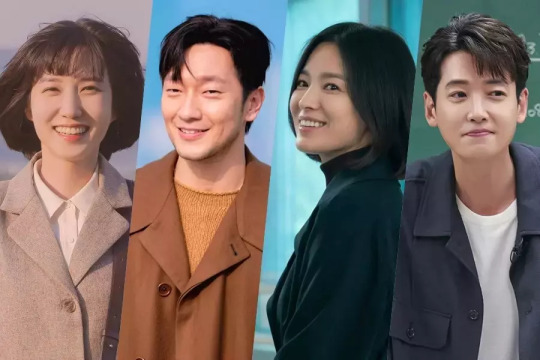
¡Los 59th Baeksang Arts Awards han anunciado sus nominados para las categorías de cine y televisión!
Los candidatos fueron elegidos entre dramas, programas y películas que se emitieron o se estrenaron entre el 1 de abril de 2022 y el 31 de marzo de 2023. Sin embargo, las obras que se estrenaron durante el período de proyección del año pasado también se incluyeron en el grupo de este año. Se encuestó a 60 expertos de la industria antes de las nominaciones finales. Además, las producciones que se excluyeron el año pasado porque se estrenaron durante el período de proyección también se incluyeron en el grupo de este año.
Echa un vistazo a los candidatos finales de la televisión y el cine del año pasado a continuación:
Mejor Drama
JTBC “My Liberation Notes” Netflix “The Glory” tvN “Our Blues” ENA “Extraordinary Attorney Woo” tvN “Little Women”
Mejor Variety Show
tvN “Earth Arcade” Psick University “Psick Show” Netflix “Physical: 100” TVING “EXchange 2” Coupang Play “SNL Korea 3”
Mejor Show Educativo
wavve “National Office of Investigation” (literal title) Netflix “In the Name of God: A Holy Betrayal” EBS “Your Literacy Skills+” (literal title) MBC Gyeongnam “Adult Kim Jang Ha” (literal title) KBS “Hidden Earth: 3 Billion Years on the Korean Peninsula”
Mejor Actor
Son Suk Ku – JTBC “My Liberation Notes” Lee Byung Hun – tvN “Our Blues” Lee Sung Min – JTBC “Reborn Rich” Jung Kyung Ho – tvN “Crash Course in Romance” Choi Min Sik – Disney+ “Casino”
Mejor Actriz
Kim Ji Won – JTBC “My Liberation Notes” Kim Hye Soo – tvN “Under the Queen’s Umbrella” Park Eun Bin – ENA “Extraordinary Attorney Woo” Song Hye Kyo – Netflix “The Glory” Suzy – Coupang Play “Anna”
Mejor Actor de Reparto
Kang Ki Young – ENA “Extraordinary Attorney Woo” Kim Do Hyun – JTBC “Reborn Rich” Kim Jun Han – Coupang Play “Anna” Park Sung Hoon – Netflix “The Glory” Jo Woo Jin – Netflix “Narco-Saints”
Mejor Actriz de Reparto
Kim Shin Rok – JTBC “Reborn Rich” Yeom Hye Ran – Netflix “The Glory” Lee El – JTBC “My Liberation Notes” Lim Ji Yeon – Netflix “The Glory” Jung Eun Chae – Coupang Play “Anna”
Mejor Nuevo Actor
Kim Gun Woo – Netflix “The Glory” Kim Min Ho – ENA “New Recruit” Moon Sang Min – tvN “Under the Queen’s Umbrella” Joo Jong Hyuk – ENA “Extraordinary Attorney Woo” Hong Kyung – wavve “Weak Hero Class 1”
Mejor Nueva Actriz
Kim Hieora – Netflix “The Glory” Noh Yoon Seo – tvN “Crash Course in Romance” Lee Kyung Sung – JTBC “My Liberation Notes” Joo Hyun Young – ENA “Exaordinary Attorney Woo” Ha Yun Kyung – ENA “Extraordinary Attorney Woo”
Mejor Entertainer Masculino
Kian84 Kim Kyung Wook Kim Jong Kook Jun Hyun Moo Hwang Jae Sung
Mejor Entertainer Femenina
Kim Min Kyung Park Se Mi Lee Soo Ji Lee Eun Ji Joo Hyun Young
Mejor Película
“Next Sohee” “The Night Owl” “Hansan: Rising Dragon” “Hunt” “Decision to Leave”
Mejor Actor
Ma Dong Seok – “The Roundup” Ryu Jun Yeol – “The Night Owl” Park Hae Il – “Decision to Leave” Song Kang Ho – “Broker” Jung Woo Sung – “Hunt”
Mejor Actriz
Bae Doo Na – “Next Sohee” Yang Mal Bok – “The Apartment With Two Women” Yum Jung Ah – “Life Is Beautiful” Jeon Do Yeon – “Kill Boksoon” Tang Wei – “Decision to Leave”
Mejor Actor de Reparto
Kang Ki Young – “The Point Men” Kim Sung Cheol – “The Night Owl” Park Ji Hwan – “The Roundup” Byun Yo Han – “Hansan: Rising Dragon” Im Siwan – “Emergency Declaration”
Mejor Actriz de Reparto
Park Se Wan – “6/45” Bae Doo Na – “Broker” Ahn Eun Jin – “The Night Owl” Yum Jung Ah – “Alienoid” Lee Yeon – “Kill Boksoon”
Mejor Nuevo Actor
Noh Jae Won –”Missing Yoon” Jinyoung – “Christmas Carol” Byun Woo Seok – “20th Century Girl” Seo In Guk – “Project Wolf Hunting” Ong Seong Wu – “Life Is Beautiful”
Mejor Nueva Actriz
Go Yoon Jung – “Hunt” Kim Si Eun – “Next Sohee” Kim Hye Yoon – “The Girl On a Bulldozer” IU – “Broker” Ha Yun Kyung – “Gyeong Ah’s Daughter”
La ceremonia está programada para el 28 de abril en Paradise City en Incheon a partir de las 5:30 p.m. KST. El programa se transmitirá en vivo por televisión a través de JTBC, JTBC2 y JTBC4, y también se transmitirá en vivo a través de TikTok.
Fuente: soompi.com
8 notes
·
View notes